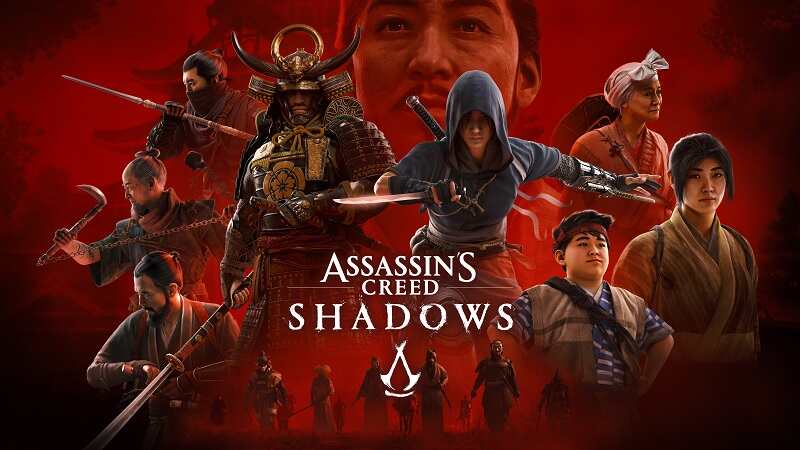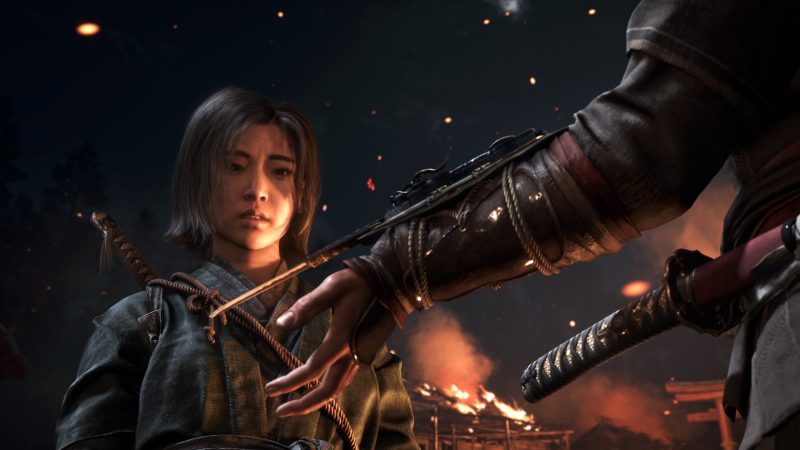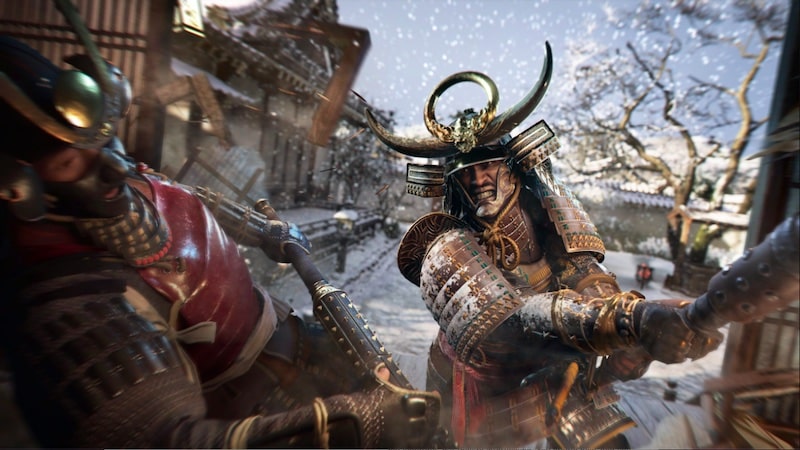Assassin’s Creed Shadows Hands-On Preview – While I would love to just focus on the actual game, Assassin’s Creed Shadows, in this preview (and for the most part I will), the weight this game carries is an unavoidable topic.
Ubisoft currently has all its eggs in one basket with Assassin’s Creed Shadows. The global developer/publisher is in dire straits after 2024’s year of bad bets and big-budget misfires, and it’s looking like Ubisoft will come out of 2025 looking entirely different than it does now.
It’s fate is currently, and irrevocably, after the most recent delay, tied to the success (or failure) of Shadows. In this way, Assassin’s Creed Shadows is arguably the biggest gamble Ubisoft has made in its company’s history, and if you didn’t know anything about how badly 2024 went for the company, you’d probably be able to tell with how Ubisoft is putting everything it has behind Shadows.
We’re finally bringing the Assassin’s Creed franchise to Feudal Japan, the top-requested location/setting for an Assassin’s Creed game since the series began. It’ll actually be available to buy on Steam at launch, instead of Ubisoft trying to force PC players to use the company’s proprietary launcher.
Most importantly though, is that Shadows is not just the next entry in the Assassin’s Creed series, it’s the beginning of a new era for the franchise. Shadows marks the launch of the Animus Hub (formerly codenamed Assassin’s Creed Infinity), something that’s been years in the making and will be the one-stop-shop for all Assassin’s Creed games.
In 2022, Ubisoft called it “a gateway for all Assassin’s Creed experiences where the meta-story will live asynchronously.” That all begins here, and what makes it different than what Activision Blizzard did to Call of Duty, is that when Activision made that transition, the future of the company wasn’t on the table. The stakes are so much higher here, it feels like anything could be the difference between Shadows landing with players, or missing entirely.
So how did it feel for me, playing a little under four hours the other day? It felt pretty good, but I’m not yet sure this is the big break the franchise needed.
Assassin’s Creed Shadows Hands-On Preview – Is This The ‘Assassin’s Creed’ Game We’ve All Been Waiting For?
It’s Been A Long Time Coming
I remember when the first Assassin’s Creed game was released, back in 2007, because it was one of the games I got for Christmas that year. In fact, it was two of the games I got for Christmas, so I got to trade one of them in for something else. I remember playing through it, immensely impressed with the parkour, and delighted by how fun, and frankly, silly, the stealth systems were to play with. When I finished it, perhaps because I had no imagination in that moment, I immediately thought the next game should be set in Feudal Japan.
Turns out I had to wait a long time for that to happen, and by this point I’m a long-time enjoyer of the series whose coming back to it after being burned out on just how absolutely dense these games got. What credit I do give to the RPG-ification of the series, is that it was the kind of big swing the series needed.
Shadows now being the fourth game of Origins-ilk, for me, the series is already in need of another big change.
Of course it’s difficult to say a little under four hours in, – and not all of that even being consecutive – but it more or less seems like more of the same Assassin’s Creed we’ve been playing for what feels like forever.
For the first hour, I played through Yasuke and Naoe’s separate introductions. Once those were done, I was fast-forwarded in the story a number of hours, dropped into a save with Gold-tier weapons, where I could swap between the two characters and played through a mainline quest to assassinate a man called “The Noble.”
Firstly, I want to credit the look of this game. I was playing a build that was running on a PC in Montreal, and was then being streamed to my PC, so I can’t really comment on the graphics. I can however comment on the look and design of the world, which is just absolutely beautiful. When I had finished the intros, I was dropped into Himeji, a city I was lucky enough to visit two years ago.
The city itself was an impressive sight from the top of the castle, as was the exterior fields of the city streets. Even though they have made mistakes, it’s clear that Ubisoft is doing its best to really bring you into these places around the world.
At the same time, the look of each Assassin’s Creed game has had a certain standard for years now. I expected it to look this good, because that’s what Ubisoft has established I should expect. I think it’s more important, for any open-world game, that the world look interesting to explore, with far off points on the map and in-game world that draw me towards them.
Not even a full four hours in, mainly set in one part of the map, I can’t yet say if Shadows does that for me yet – which might be my biggest concern about the game so far.
Same As It Ever Was
The most disappointing feeling I had when I finished my time with Shadows, was that it didn’t feel meaningfully different from previous games in the franchises. I know that’s not a drawback for the biggest fans of this series. There’s a formula to these games that a lot of players really love digging into.
And I get it, sometimes it feels good to check a bunch of things off a list, and if the gameplay around that is serviceable, or even good, then that’s for the better. But I’ve long been over seeing a giant list of things to do, heading from one point on the map to another. Ubisoft has even directly commented on this issue with their previous games, pointing to changes they’ve made in Shadows to curb that guided, hand-holding style.
There’s a new system for discovering the world in Shadows. Viewpoints, for example, don’t just reveal every point of interest in a given area anymore – at least not in the way they used to. Climbing to a viewpoint will reveal a number of icons on your map, but they’re all question marks. You need to head towards them to figure out what they are.
Quests in Shadows also won’t tell you where to go, you’ll need to figure it out through context clues provided to you through conversations you’ve had with other characters. Being told your target, or someone you need to go talk to, is located somewhere in the southern part of the city you’re in, for example, is definitely a less guided, hand-holding way to handle exploration.
While working through the main quest I played where I was getting closer to a target known as “The Noble,” using the context clues given, and the question marks that had revealed after I climbed to a nearby viewpoint, I was able to narrow down where I needed to go and continue the quest.
Scouts are another new mechanic when it comes to exploration in Shadows. As you grow your hideout and reputation, you can recruit NPC’s to scout out an area, and they’ll be able to tell you where to go. When I tried it out, my scout was able to tell me exactly where I needed to go, and it felt like a nice in-world way to cut any friction or frustration I could be feeling, if I was ever struggling to figure out where to go next on my own.
On one hand, moving through “The Noble” questline felt like I wasn’t being guided as much, but on the other, it wasn’t lost on me that this just the same gameplay loop the series has always had, with more steps to it now. On paper these exploration changes sound like they could make playing an Assassin’s Creed game a ‘fresh’ experience, but even after just experiencing the full loop once, I’m not sure it’s enough to give that ‘fresh’ feeling.
But there’s another aspect to all of this that’s been changed in Shadows, which could perhaps be what I’m missing. Your objective lists, and all the quests you’ve begun and have yet to finish are no longer laid out as one giant list. Instead you view it as a quest board, moving your cursor from one icon to the next, with quests represented by the targets you’re tracking.
Due to the limitations of the preview, I never felt like I had a reason to spend a lot of time looking at the objective board, because there was only one thing on it. However I can imagine a scenario where, while jumping back and forth from my objective board to the map, I don’t get that ‘checklist’ feeling, or that I’m using the context clues from multiple open quests to find points of interest, maybe even without the question mark icons being revealed by a nearby viewpoint.
Only after I’ve spent a significant amount of time in the full game will I be able to tell if the change from an objective checklist to an objective board has any real impact on the experience. But based on what I played in this preview, it feels more like putting lipstick on a pig.
Putting Your Back Into It
While I did have all those reservations and cautious feelings about the exploration, areas of the game that I was very pleased with was the combat, parkour and stealth. Starting with the parkour, when playing as Naoe in particular, it’s easily the most fluid parkour and movement system in the series yet.
The grapple hook opens up so many climbing options, that for the first time in a long time in an Assassin’s Creed game, nothing in the world felt like it was off-limits, or that there was only one way forward, in terms of climbing. Climbing with Yasuke does not feel as freeing, but he’s also not built for that part of the gameplay in the same way.
What he is built for, is combat, which feels pretty darn incredible when you’re playing as Yasuke. He’s an honest-to-god tank, and the added gore to the combat in Shadows really makes every blow feel like it is landing with a satisfying thud. Watching the heads of your enemies roll on the ground, or lifting them up on your sword are two parts of the combat that I don’t think will ever get old.
There’s a weight to each swing and parry that I felt was missing from the series, and I’m glad to be feeling it again with Shadows. I’m also glad that the stealth actually feels like it’ll be fun again. I really love stealth games and good stealth gameplay, and while Assassin’s Creed almost always walked a more arcade-y line, it was a big, fun, stealth game that I got to play every year. Until it wasn’t.
The way Naoe plays though, makes me think I’ll be able to have a lot more of that same kind of fun I had back when it was a more stealth-focused series, before the RPG shift took center stage. I appreciate the small changes like being able to turn off lights, or assassinate enemies through thin doors – not to mention that her expanded movement options, specifically her increased verticality with the grapple hook make for a much more interesting time sneaking around.
Her combat animations are also so slick, I can already see myself spending the time to get really good at parrying, so I can approach combat situations with her and cut enemies down with a little more finesse.
For all my reservations and concerns around what I’d call the framing of the game, i.e. the open-world structure and pacing, I’m happy that these extremely important parts of the gameplay already feel so, so, strong.
Will It Be Enough?
That’s the question that continues to run through me as I write this preview. Are the changes to exploration going to be more impactful over the tens of hours it’ll take to complete this game? Does the combat, stealth and parkour all feel good enough that I won’t get bored, even if I’m right about Shadows being the same Ubisoft formula it’s always been, but with more steps? Will the story and characters stick this time?
As much as I loved Valhalla, and particularly Eivor as a character, I still dropped off that game somewhere beyond the 50 hour mark, because of how much padding was stuffed in. Will the same happen here?
Who knows. I’ve only played a little less than four hours of the game, and I left that feeling more pessimistic than optimistic. I would love to eat that pessimism though come March.
Assassin’s Creed Shadows will arrive on PS5 and PS5 Pro on March 20, 2025.







